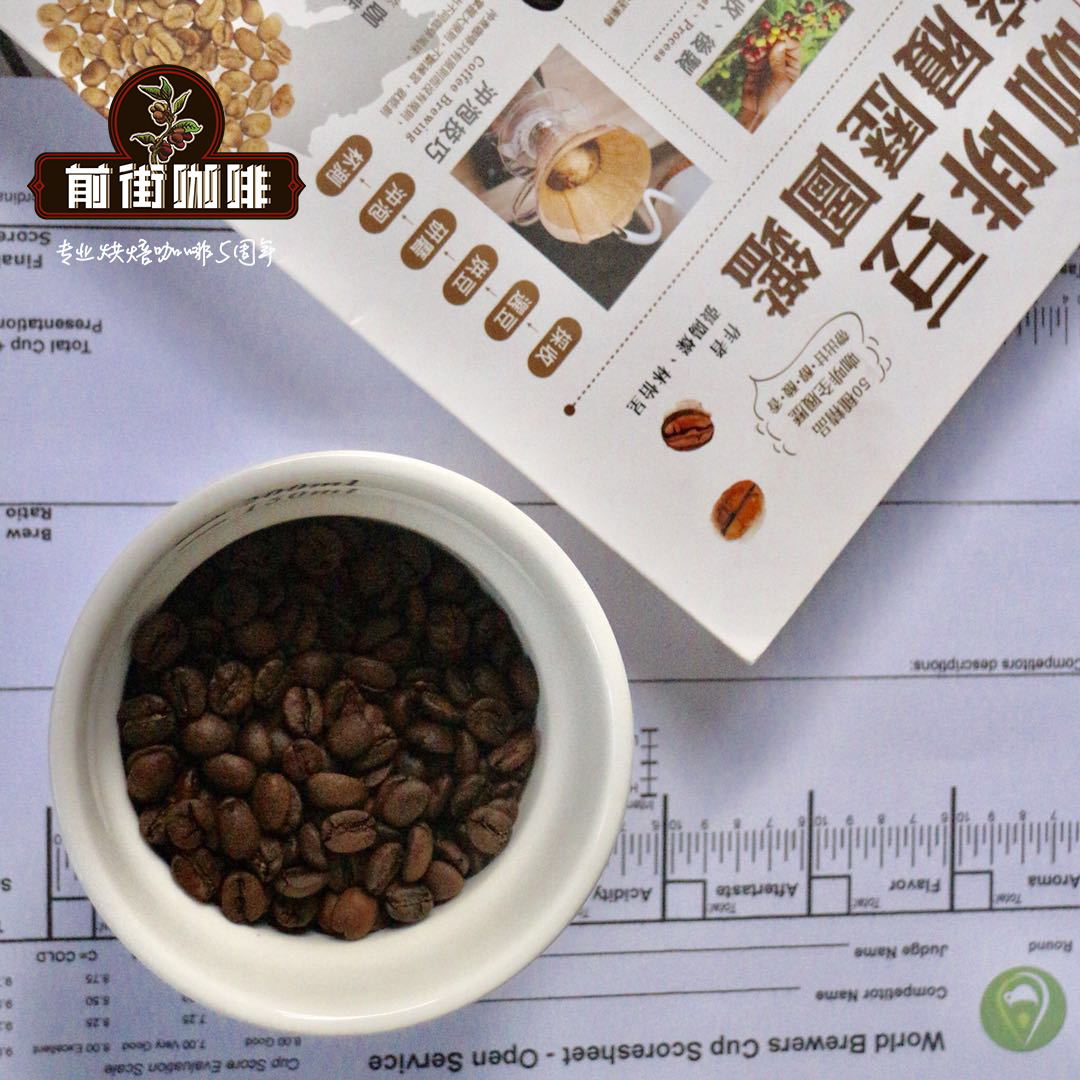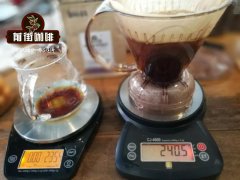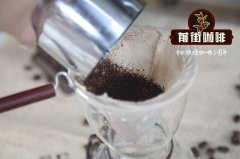How to drink washed coffee beans in Fairview Manor, Nicaragua

Professional coffee knowledge exchange More coffee bean information Please pay attention to coffee workshop (Weixin Official Accounts cafe_style)
Nicaragua MARACATURRA SHB EP
Nicaragua Scenic Estates
01 |Brief Introduction to Coffee Production Areas in Nicaragua
coffee-producing region of Nicaragua
Nicaragua is divided into four major regions: Segovias, Matagalpa/Jinotega, Boaco and Pacific Coast. The highest planting height in Segovia is about 1,500 - 2,000, and the coffee produced is the highest SHG (Strictly High Grown).
Cultivation in Nicaragua
The volcanic ash and shady cultivation produce high-quality Nicaragua coffee with a mild, mild, slightly acidic flavor. Nicaragua coffee volume is the largest of all coffee beans, and MADRIZ(Madriz) is located in the northern mountains of Nicaragua, adjacent to Nueva Segovia,Jinotega and Esteli, this area is quiet and elegant, there is the famous Somoto Canyon, the local residents are mainly indigenous tribes and colonial period and Spanish mixed race (mostly Chorotegas).
Coffee is produced locally, a processing trade develops in arts and crafts, and traditional delicacies are available. Madris is characterized by a cool climate, its small towns seem simple, but beautiful house roofs and special tile white buildings are also featured, there are many coffee plantations, and the mountains are full of green pine and oak forests.
In pure natural cultivation environment, more complex operations are adopted to maintain the delicate aroma and taste of coffee; high-quality mountain beans are grown in northern Nicaragua under an average annual rainfall of 1500-1700mm and a temperature of 20-29 degrees Celsius.
Nicaragua Coffee Estate-View Estate
Located on the outskirts of San Fernando, Nicaragua, Villa Belvedere is carefully managed by the founder Roger Esau Herrera Ortez family. The estate is located in a mountainous area at an altitude of 1,400 - 1,650 meters. The low temperature causes the coffee trees to grow slowly. It usually takes four years for the saplings to start bearing fruit. Of course, the advantage of this is that the coffee produced by the estate is very sweet.
Roger Esau Herrera Ortez chose this area as his own coffee growing area in 1997. After various difficulties, Roger Esau Herrera Ortez has grown to four coffee growing areas and a washing station. Except for Fairview Manor, which he managed personally, the other three plantations were managed by his sons.
Roger Esau Herrera Ortez decided to invest more in improving the facilities of the washing station, such as the introduction of a wastewater reuse system and a new washing classification system, which will not only avoid water pollution but also improve the classification capacity of coffee and obtain more and better quality coffee. Also in this season, Roger Esau Herrera Ortez finished fifth in the Nicaragua Cup of Excellence.
02 |treatment
Complete washing:
Use washing and fermentation methods to remove the peel pulp and mucous membrane, using washing method farms must build washing tanks, and can introduce a continuous flow of fresh water. When processing, it is to put the beans into the pool, move back and forth, and use the friction of beans and the power of running water to wash the coffee beans to smooth and clean. The entire fermentation time is only about 24-30 hours.
03 |green bean analysis
Maracaturra is a hybrid of Maragogype and Caturra, with both the plump body of the former and the sweet flavor of the latter, common in Nicaragua.
Maracaturra: A hybrid variety, Maragogype and Caturra, common in Nicaragua.
But this variety is grown in El Salvador's Apaneca, a coffee estate that has won the Cup of Excellence twice-Finca Himalaya.
Breaking with tradition: Why Maracaturra?
Mauricio currently grows elephant beans, orange bourbon, and pacamara. Even though his coffee now has excellent flavor, he is still trying to find ways to improve.
Mauricio spoke to Manuel Meza, then director of research at The Salvadoran Foundation for Coffee Research (Procafé), who told him that he had met Maracaturra in Matagalpa, Nicaragua, and that he had won the top five places in the Cup of Excellence many times.
Manuel Meza was happy to help Mauricio, so he brought Maracaturra seeds for Mauricio to plant.
What is special about Maracaturra?
Like Maragogype, Maracaturra coffee beans come in large sizes. Mauricio told me that he inherited the excellent flavor and high yield of Caturra. Its short stature and abundant foliage act as a barrier to strong winds-useful on Mauricio's often windy estate.
Unfortunately, this variety is susceptible to leaf rust and therefore requires a high degree of care. Its flavor is tropical fruit with bright acidity. It finished fifth at the 2015 Cup of Excellence, and Mauricio believes it will outperform Pacamara in future harvests.
In the future Mauricio plans to treat Maracaturra coffee cherries with semi-washing, honey treatment and sun treatment. By doing so, he could find the best way to deal with it. He uses African beds, which stabilize the circulation of air and make the drying process more even.
Roasting analysis of Nicaragua coffee beans
The particles of this coffee are relatively large, and the density is relatively large. The dehydration process is prolonged. The heat absorption is also relatively slow during the roasting process. The process of Mena reaction is also relatively slow. The yellowing point is 6 minutes. In the first batch of roasting, the temperature of my next bean is relatively high. The temperature of the bean is 200 degrees Celsius. The firepower is also relatively large. In the roasting process, gradually increase the firepower as needed. Under this operation method, the dehydration time of coffee is relatively long, and the heating rate is 6-8 degrees every 30 seconds.
Baking machine Yangjia 600g semi-straight fire
The oven temperature is 200 degrees Celsius, the oven is put into the pot, the air door is opened at 3, after 1:00, the fire is adjusted to 140 degrees, the air door is unchanged, the temperature is returned to 1 '37 ", the fire is maintained, the bean surface turns yellow, the grass smell completely disappears, the dehydration is completed, the fire is unchanged, and the air door is adjusted to 4;
Dehydration at 6 '05', ugly beard wrinkles and black stripes appear on the surface of 9 '33 "beans, and the taste of toast obviously changes to coffee fragrance, which can be defined as the prelude to the first explosion. At this time, you should clearly hear the sound of the first explosion point. Start the explosion at 9' 53", reduce the fire to 80 degrees, fully open the damper 5 (adjust the fire very carefully, not too small to have no explosion sound), develop 1 '55 "after the explosion, and put it in the pan at 192.5 degrees.
This coffee bean 100% Maracaturra, peel flavor, round taste, lingering sweetness, fine, clean balance, lively finish with sweet almond.
Brewing Analysis of Nicaragua Coffee
Recommended cooking methods: siphon, hand brewing
Abrasion: 3.5 (Fuji R440)
V60 filter cup, 15 grams of powder, water temperature 91-92 degrees, grinding 3.5, water powder ratio close to 1:15
33 grams of water stewed for 25 seconds
Staging: water injection to 100ml, water cut off slowly to 225ml,
30-100-95.
Other suggestions for trickle-filtration extraction:
Normal pressure, recommended abrasiveness of 3.5-4/water temperature 92°C
Aile pressure, recommended 2.5 grind, water temperature 88°C
Hand washing: 3.5 grinding degree, water temperature 89°C
3.5 Grinding-91 degrees water temperature
END
Important Notice :
前街咖啡 FrontStreet Coffee has moved to new addredd:
FrontStreet Coffee Address: 315,Donghua East Road,GuangZhou
Tel:020 38364473
- Prev

Nicaragua CoE 21 Saint Mary Manor Sun Coffee suggestion _ Saint Mary Coffee varieties introduction
Professional coffee knowledge exchange more coffee bean information please follow the coffee workshop (Wechat official account cafe_style) Nicaraguan coffee brand-Rhodes Saint Mary Santa Maria de Lourdes [Saint Mary Cup victorious Army] Nicaragua is the most amazing producing area this year, starting from Miguel's raw bean class, we have tried many times to have a very special flavor.
- Next

Nicaragua Bull Estate Yellow Honey Processing H1 Variety Coffee Flavor Characteristics_What is Red Bull Coffee
Professional coffee knowledge exchange More coffee bean information Please pay attention to Coffee Workshop (Weixin Official Accounts cafe_style) Yellow honey Nicaragua Coffee Bull Manor Nicaragua Las Promesas Gonzalo Adn Castillo Honey Hazelnut Peach Green Apple 2018 Nicaragua COE 2nd place, Cup score 90.42 points Nicaragua-Bull Three Fighters series ====
Related
- Detailed explanation of Jadeite planting Land in Panamanian Jadeite Manor introduction to the grading system of Jadeite competitive bidding, Red bid, Green bid and Rose Summer
- Story of Coffee planting in Brenka region of Costa Rica Stonehenge Manor anaerobic heavy honey treatment of flavor mouth
- What's on the barrel of Blue Mountain Coffee beans?
- Can American coffee also pull flowers? How to use hot American style to pull out a good-looking pattern?
- Can you make a cold extract with coffee beans? What is the right proportion for cold-extracted coffee formula?
- Indonesian PWN Gold Mandrine Coffee Origin Features Flavor How to Chong? Mandolin coffee is American.
- A brief introduction to the flavor characteristics of Brazilian yellow bourbon coffee beans
- What is the effect of different water quality on the flavor of cold-extracted coffee? What kind of water is best for brewing coffee?
- Why do you think of Rose Summer whenever you mention Panamanian coffee?
- Introduction to the characteristics of authentic blue mountain coffee bean producing areas? What is the CIB Coffee Authority in Jamaica?

